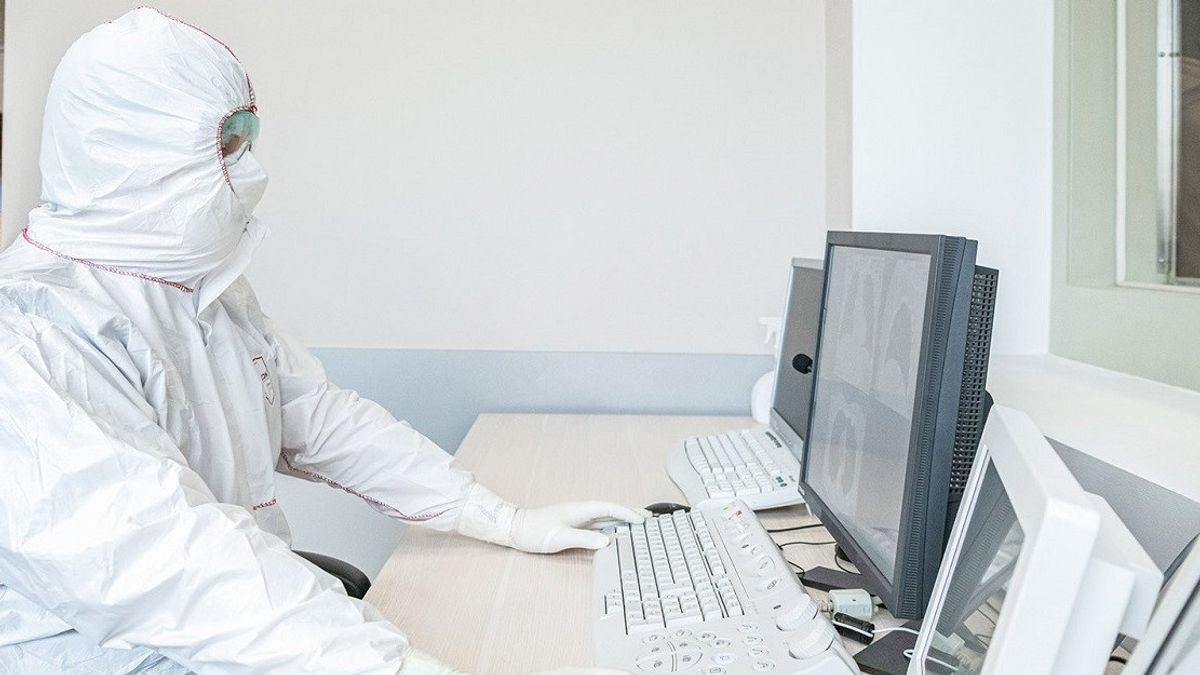JAKARTA - The Omicron BA.2 subvariance of the Omicron variant of the Coronavirus appears to be more infectious than the more common BA.1 sub-lineage, according to the Danish Ministry of Health, where this subvariant is dominant.
"There is no evidence that the BA.2 variant causes more disease, but it is definitely more contagious," Danish Health Minister Magnus Heunicke told a news conference, citing Reuters on January 27.
The BA.1 lineage currently accounts for 98 percent of all cases globally. But in Denmark, the subvariant BA.2, which became the dominant strain in the second week of January.
Preliminary calculations suggest BA.2 could be 1.5 times more infectious than BA.1, Denmark's top infectious disease authority, the Statens Serum Institute (SSI), said in a note on Wednesday.
However, a preliminary analysis by the agency showed no difference in the risk of hospitalization for BA.2 compared to BA.1.
"There are some indications that it is more contagious, especially to the unvaccinated, but it can also infect people who have been vaccinated to a greater extent," SSI technical director Tyra Grove Krause told a briefing.
This could mean the peak of the Danish epidemic will extend a little further into February than previously thought, Krause said.

Apart from Denmark, BA.2 cases have also been registered in the UK, Sweden, and Norway, but at a much lower rate. The UK's Health Safety Agency has designated BA.2 as the variant under investigation, saying it could have a growth advantage.
Previously, citing Medical News, the Omicron variant of the coronavirus has about 60 mutations, it is estimated that its sister lineage may have 85 mutations.
The World Health Organization (WHO) said over the weekend this lineage differs from the original Omicron strain by several mutations, including the spike protein, the SARS-CoV-2 protein that mediates host cell entry. This variant is also called the "stealth variant" because of the mutation that renders it 'invisible' as an Omicron for PCR testing.
The BA.1 and BA.2 subvariants are about 20 mutations apart. Interestingly, the two Omicron sub-lineages are sister clades that separated from each other a few months ago and are not derived from each other. Both carry mutations roughly comparable to the ancestral strain of SARS-CoV-2, according to Professor Francois Balloux, director of the UCL Institute of Genetics.
The BA.2 subvariant has spread to more than 40 countries, including the US, UK, India, Denmark, Australia, and Norway. The latter currently accounts for half of Omicron cases. It is currently unknown why BA.2 dominated so quickly in Norway.
Current reports equate the symptoms of the new lineage to the original Omicron strain, such as sore throats, headaches, and nausea. It is believed that there is no difference in the severity of the disease, with some even suggesting the symptoms are milder.
Scientists now understand that previous Omicron infection provided protection against BA.2 and expect the vaccine that has been developed to be effective against the Omicron subvariant. Nonetheless, WHO has made recommendations that understanding the immune escape characteristics of BA.2 is a top priority.

Citing ABC News, the WHO stated BA.2 was not a "variant of concern," meaning there is no current evidence to suggest that this new subvariance will exacerbate COVID-19 transmission, disease severity, or the efficacy of vaccines and public health measures such as the use of masks and social distancing.
To note, the number of BA.2 worldwide is increasing, with at least 40 countries reporting cases to a global variant tracking database, but the subvariance has spread rapidly in Denmark and the UK, with nearly half of Denmark's recent cases attributed to BA. 2.
"It is in the nature of viruses to evolve and mutate, so hopefully we will continue to see new variants emerge as the pandemic progresses," said Dr. Meera Chand, director of COVID-19 incidents at the UK's Health Safety Board.
SEE ALSO:
Despite being called the "stealth" omicron variant, the new subvariant, "is completely detectable through traditional surveillance mechanisms either through rapid testing or PCR," said Dr. John Brownstein of Harvard Medical School.
Conventional COVID-19 tests can show positive or negative results, but cannot determine a specific variant. For that, scientists need to perform additional genetic sequencing. Simply put, the omicron variant has certain genetic traits that allow scientists to quickly and easily determine whether a sample is an omicron or not.
The new BA.2 subvariant lacks that feature, meaning scientists can no longer use this shortcut, although they can still identify the subvariant using genetic sequencing technology. For this reason, the BA.2 subvariant is sometimes referred to as the "stealth" variant. But for the general public, conventional COVID-19 tests will still work to detect new subvariants.
"BA.2 is important from a public health perspective, but it doesn't fundamentally change at this point in how we think about its impact on populations," Brownstein said.
"More work needs to be done to understand the severity, breakthrough infection, and immunization before you can make statements of clinical relevance."
"While it's important to understand that within the omicron family, there are sub-lineages that are potentially more infectious, that doesn't necessarily cause panic," Brownstein concluded.
The English, Chinese, Japanese, Arabic, and French versions are automatically generated by the AI. So there may still be inaccuracies in translating, please always see Indonesian as our main language. (system supported by DigitalSiber.id)


















